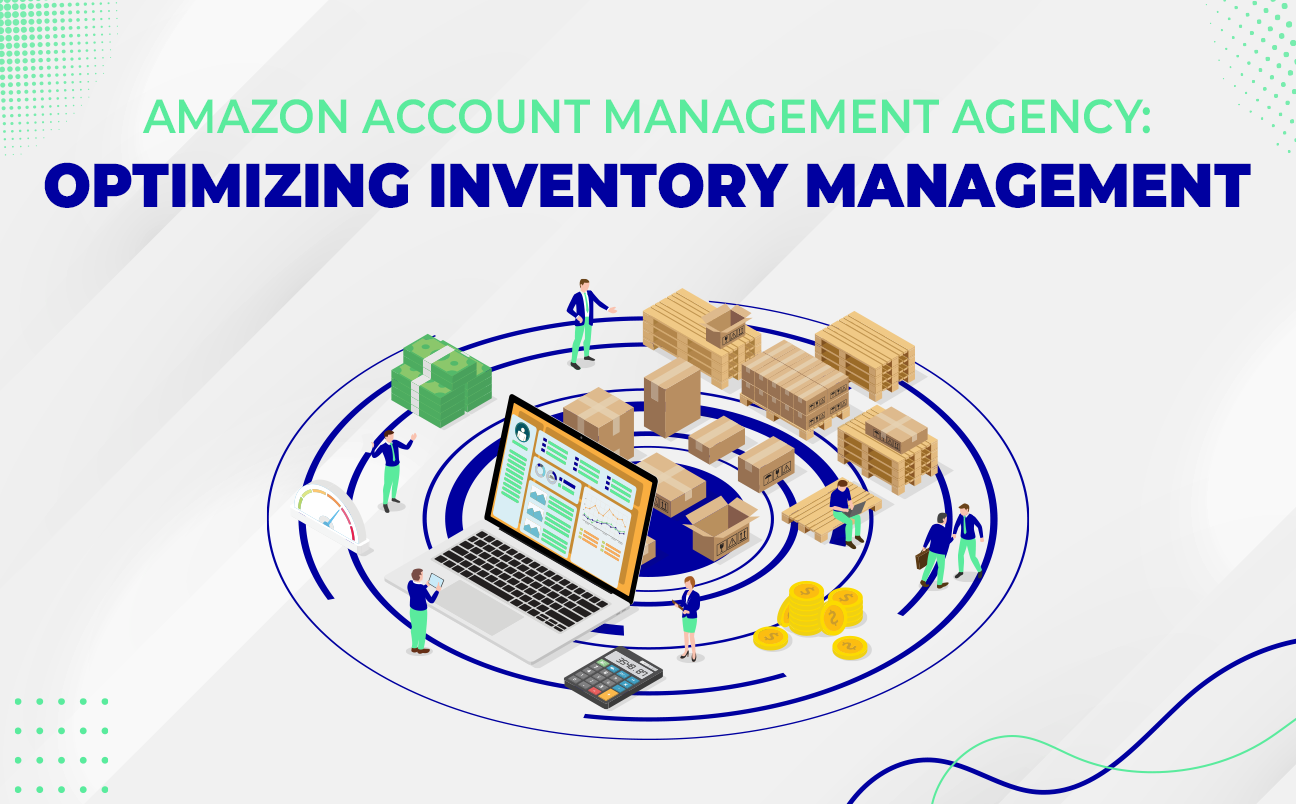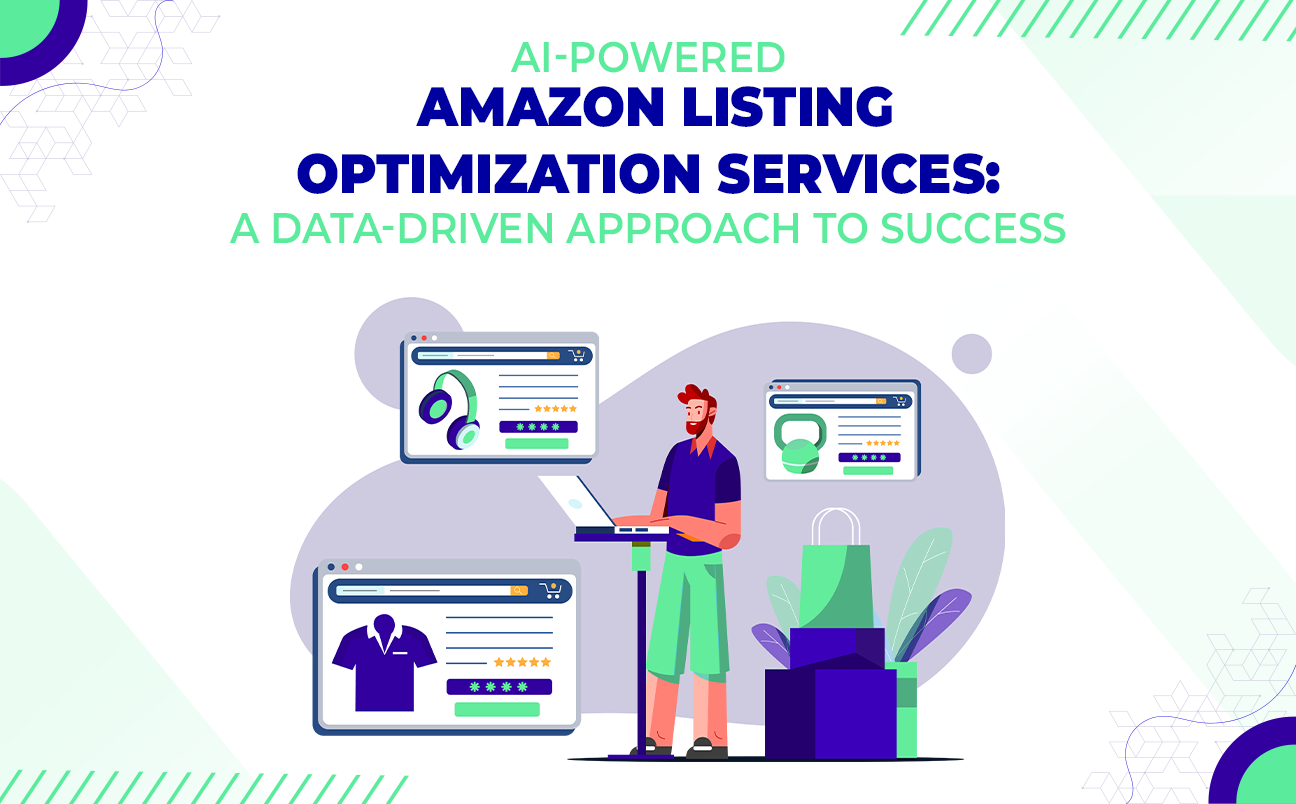Visualize a busy warehouse with shelves piled high with several crates of goods. The potential for a successful business is being held back by the weight of extra inventory that hangs in the air. The burden of excessive stock can cast a shadow on success in e-commerce, where agility and efficiency rule supreme. But don’t worry! You may liberate yourself from the shackles of excess inventory and open up a world of possibilities in the thriving Amazon marketplace with the correct methods and the direction of an experienced Amazon account management agency. The first step in implementing successful tactics to steer clear of problems in Amazon marketplace management is to comprehend the detrimental effects of excess stock. Continue reading as we explore the drawbacks of having too much inventory and learn how to escape its grips, enabling your business to flourish like never before.
What is Excessive Inventory?
Excess inventory is the surplus or overstock of commodities or items that a company or business keeps above the ideal or desired level. It happens when there is an imbalance between the supply and demand for goods or when consumer requirements are incorrectly predicted. Finished goods, raw materials, parts, and other items not being sold or used as quickly as anticipated might all be considered excess inventory.
Businesses may face several difficulties and risks as a result of having too much inventory. It consumes storage space, holds up necessary money, and raises carrying costs for warehousing, insurance, and upkeep. Additionally, too much inventory might become outdated or spoiled, which lowers a business’s total profitability.
Amazon account management agency helps preserve productivity and financial stability, firms must effectively manage surplus inventory. Businesses that manage their extra inventory well can streamline their processes, cut expenses, and boost their bottom line.
Does Having Too Much Inventory Have Any Benefits?
Several individuals think there are benefits to having additional stock on hand since it enables firms to fulfill client orders more quickly and reduces the possibility of shortages.
Additionally, buffer stock (safety stock) and surplus inventory are frequently misunderstood terms. Inventory personnel carry buffer stock, a managed quantity of extra stock (above predicted demand), to address situations like unforeseen sales peaks or supplier delays. Contrarily, excess stock refers to goods that accumulate accidentally in a warehouse due to bad planning and purchase choices.
Whatever the cause, there is little doubt that having too much stock has several drawbacks. Let’s look more closely:
Why is Stocking Up Too Much Bad? What are the Negative Effects of Too Much Inventory?
Many firms rely heavily on their cash flow. Lacking enough cash flow, firms may find it difficult to pay staff, settle debts, or even continue operating. Sadly, too much inventory is a severe drain on financial resources. Spending money on goods that won’t soon provide revenue, like inventory held in a warehouse with low demand, wastes money.
For businesses, having excessive inventory or stock can create several problems. Here are some significant justifications by HRL Infotecs an Amazon account management agency on why it is viewed as undesirable:
- Higher Holding Costs: Too much inventory eats up working capital and costs more to store, maintain, insure, and handle. It results in higher carrying costs, which harm profitability and cash flow.
- Reduced Liquidity: Money locked up in items due to excess inventory prevents it from being used for other crucial business needs like investing in new products, R&D, or expansion. It may reduce a company’s financial flexibility and liquidity.
- Possibility of Deterioration and Obsolescence: Keeping an excessive inventory increases the possibility that goods will go out of date or spoil before being sold. It can lead to write-offs or significant markdowns, costing the company money.
- Opportunity Cost: Companies cannot correctly use their resources with too much inventory. The excessive stock took up resources and space that could have been put to better use developing new items, funding marketing campaigns, or increasing operational effectiveness.
- Reduced Agility and Responsiveness: Too much inventory might make it difficult for a business to react swiftly to market or client needs changes. Delays in product introductions, longer lead times, and challenges in adapting to changes in consumer tastes or market trends may result from it.
- Risk of Inventory Being Obsolete: Keeping too much inventory for an extended period raises the probability of products becoming obsolete or losing market relevance. There may be significant losses if the goods cannot be sold or moved at a considerable discount.
- Increased Risk of Damage or Loss: The chance of damage, loss, or theft increases as a company’s inventory level increases. Managing and safeguarding considerable inventory might be more difficult, especially when upholding standards and avoiding product deterioration.
Businesses should strive for appropriate stock levels by practicing efficient stock management techniques, effectively estimating demand, and routinely monitoring and modifying their stock levels in response to market conditions and customer needs to minimize these negatives.
How can Businesses Effectively Utilize Excess Stocked Inventory?
There are several techniques you may use to use overstock inventory efficiently.
- Offer Discounts and Promotions: Plan unique sales occasions or discount campaigns to entice customers to buy the extra stock. By doing so, you can increase sales and get rid of extra inventory.
- Bundle or Package Products: Combine excess inventory with other products to make appealing bundles or packages. Customers’ perceptions of value may be enhanced by this strategy, which may result in sales.
- Investigate New Markets or Distribution Methods: Consider extending your reach by focusing on new markets or investigating new distribution methods. It can improve the likelihood of selling the excess goods and assist in reaching underserved client segments.
- Work with Other Companies: Investigate joint ventures or collaborations with companies with complementary products or target markets. By utilizing each other’s consumer bases, you can generate opportunities for cross-promotion and sell the extra inventory.
- Repackage or Repurpose the Inventory: Think about developing new products or product variations to serve the market with the extra supply better. You can boost the inventory’s appeal to purchasers by doing this and giving it new life.
- Donate or Liquidate: If your company cannot use the surplus inventory successfully, consider donating it to a good cause or selling it at a discount or auction. Even though it might not result in immediate income, this could offer tax advantages or boost your company’s reputation.
- Review and Enhance Your Inventory Management Procedures: Use the extra stock to examine your inventory management procedures. Examine the causes of the surplus and pinpoint areas for improvement, such as improving demand forecasts, streamlining the ordering procedure, or putting just-in-time inventory solutions in place.
Summing Up
Awareness of the detrimental effects of excess inventory is essential for organizations looking to preserve their financial health and operational efficiency. Businesses can reduce the adverse effects of having too much inventory by employing efficient inventory management procedures, precise demand forecasting, and innovative utilization tactics. It enables them to maintain competitiveness in a changing business environment while optimizing cash flow and improving customer satisfaction. HRL Infotechs provides expert Amazon seller account management services to assist companies in succeeding in e-commerce. You can trust us to manage the complexities of inventory management, quickly complete orders, and increase sales and profitability on your Amazon seller account. Become a partner with us today to grow your online store.


